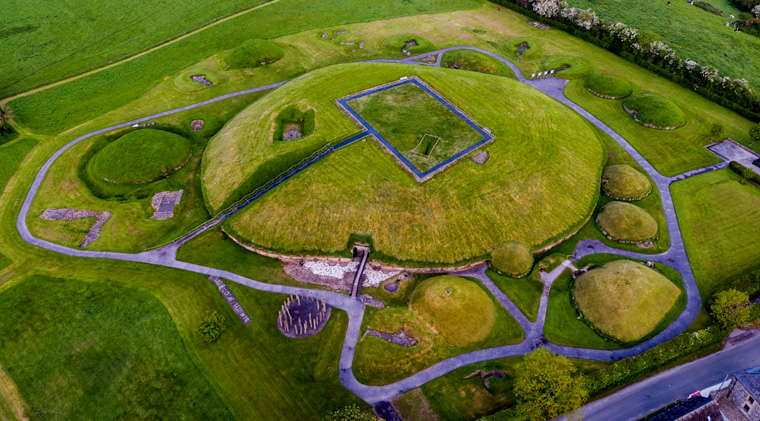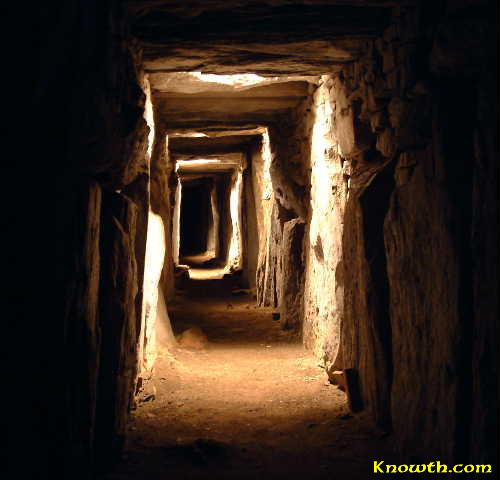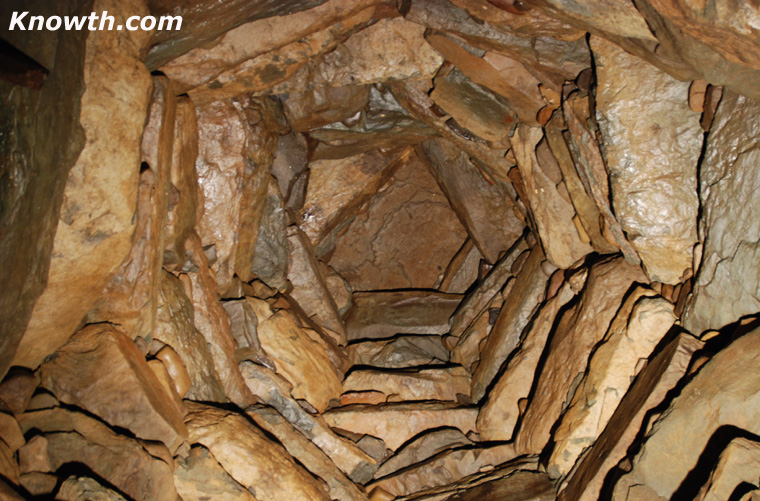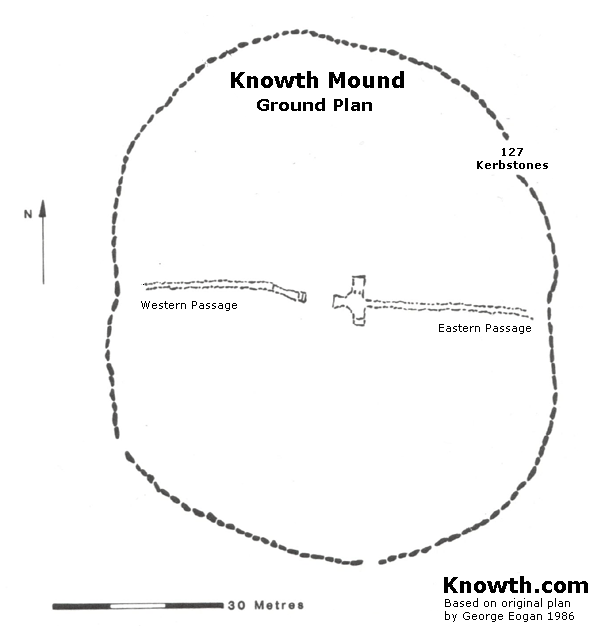The Great Mound was built over 5,000 years ago, probably after the construction of
Newgrange and before the construction
of Dowth. The Great Mound at Knowth is similar
in size to Newgrange and is surrounded by 18 smaller satellite mounds.
The Great Mound has two passages with entrances on opposite sides, the western passage is 34 metres long and the
eastern passage is 40 metre long, ending with a cruciform chamber.
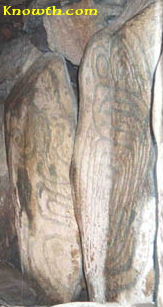 Knowth and the other megalithic sites of the Boyne Valley were designated a World Heritage Site by UNESCO
in 1993. There is no direct access to the Knowth site,
access is by guided tour from the Brú na Bóinne Visitor Centre located close to the village of Donore
on the south bank of the river Boyne.
Guided Tours of Knowth are from beginning of March to the end of October, for exact dates and more
information see Visitor Centre.
Knowth and the other megalithic sites of the Boyne Valley were designated a World Heritage Site by UNESCO
in 1993. There is no direct access to the Knowth site,
access is by guided tour from the Brú na Bóinne Visitor Centre located close to the village of Donore
on the south bank of the river Boyne.
Guided Tours of Knowth are from beginning of March to the end of October, for exact dates and more
information see Visitor Centre.
George Eogan and his team of Archaeologists began excavating the Great Mound and the smaller surrounding mounds at Knowth in 1962, five years later they discovered the first passage and chamber. Subsequent excavation revealed a second passage and chamber and a collection of decorated stones that comprises a quarter of Western European Neolithic art. More ...
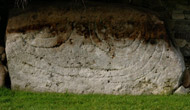 Secrets from the Grave -
Irish Times article where George Eogan talks about uncovering 18 satellite tombs around the great mound at Knowth.
They also found evidence of pottery, houses and flint artefacts from a pre-passage-tomb stage of early Neolithic
settlement around 4000 BC.
More ...
Secrets from the Grave -
Irish Times article where George Eogan talks about uncovering 18 satellite tombs around the great mound at Knowth.
They also found evidence of pottery, houses and flint artefacts from a pre-passage-tomb stage of early Neolithic
settlement around 4000 BC.
More ...
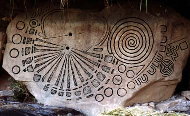 Knowth
from The Sacred Island by Martin Byrne.
Knowth
from The Sacred Island by Martin Byrne.
Engraved Knowth Kerbstone K15, possibly a sundial or lunar calendar. Drawing by Martin Brennan superimposed using Photoshop by Martin Byrne.
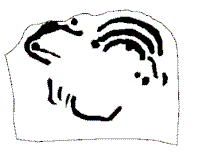 Lunar Maps at Knowth - the carvings on orthostat 47 at
the end of the chamber in the eastern passage
have been identified by Philip J. Stooke as lunar maps. The
right-hand section appears to be a map of the lunar maria. The remaining
two sections of the carving are simpler but crudely similar to the first,
sharing the overall arc shape of the maria surrounding the lunar central
highlands as well as an isolated spot representing Mare Crisium.
Lunar Maps at Knowth - the carvings on orthostat 47 at
the end of the chamber in the eastern passage
have been identified by Philip J. Stooke as lunar maps. The
right-hand section appears to be a map of the lunar maria. The remaining
two sections of the carving are simpler but crudely similar to the first,
sharing the overall arc shape of the maria surrounding the lunar central
highlands as well as an isolated spot representing Mare Crisium.

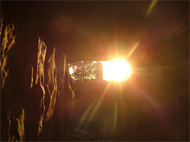
Newgrange and Knowth, both designated as UNESCO World Heritage sites, stand as testament to the ingenuity of our ancestors. Dating back over 5,000 years, these Neolithic passage tombs are older than Stonehenge and the Great Pyramids of Giza. Step inside the chambers of Newgrange, where the winter solstice illuminates a narrow passage, casting an ethereal light on the ancient carvings within. Explore Knowth, adorned with megalithic art, and unravel the mysteries of a bygone era.
Visit the megalithic passage tombs at Newgrange and Knowth with the on-site guide. These are UNESCO World Heritage sites so you will be joining others on the official tour. Beyond the renowned Newgrange and Knowth, our private tour takes you on an intimate exploration of lesser-known gems in the Boyne Valley.
Leave the logistics to us as you embark on a stress-free exploration of the Boyne Valley. Our private tours ensure a personalized and comfortable experience from the moment we pick you up at your accommodation to the time we drop you back.
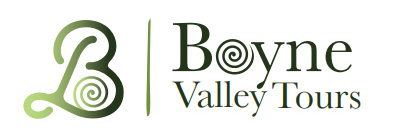 Immerse yourself in the rich heritage and culture of the Boyne Valley with our full-day private tours.
Visit Newgrange World Heritage site, explore the Hill of Slane, where Saint Patrick famously lit the Paschal fire.
Discover the Hill of Tara, the ancient seat of power for the High Kings of Ireland.
Book Now
Immerse yourself in the rich heritage and culture of the Boyne Valley with our full-day private tours.
Visit Newgrange World Heritage site, explore the Hill of Slane, where Saint Patrick famously lit the Paschal fire.
Discover the Hill of Tara, the ancient seat of power for the High Kings of Ireland.
Book Now
 Knowth and the other megalithic sites of the Boyne Valley were designated a World Heritage Site by UNESCO
in 1993. There is no direct access to the Knowth site,
access is by guided tour from the Brú na Bóinne Visitor Centre located close to the village of Donore
on the south bank of the river Boyne.
Guided Tours of Knowth are from beginning of March to the end of October, for exact dates and more
information see Visitor Centre.
Knowth and the other megalithic sites of the Boyne Valley were designated a World Heritage Site by UNESCO
in 1993. There is no direct access to the Knowth site,
access is by guided tour from the Brú na Bóinne Visitor Centre located close to the village of Donore
on the south bank of the river Boyne.
Guided Tours of Knowth are from beginning of March to the end of October, for exact dates and more
information see Visitor Centre.
George Eogan and his team of Archaeologists began excavating the Great Mound and the smaller surrounding mounds at Knowth in 1962, five years later they discovered the first passage and chamber. Subsequent excavation revealed a second passage and chamber and a collection of decorated stones that comprises a quarter of Western European Neolithic art. More ...
 Secrets from the Grave -
Irish Times article where George Eogan talks about uncovering 18 satellite tombs around the great mound at Knowth.
They also found evidence of pottery, houses and flint artefacts from a pre-passage-tomb stage of early Neolithic
settlement around 4000 BC.
More ...
Secrets from the Grave -
Irish Times article where George Eogan talks about uncovering 18 satellite tombs around the great mound at Knowth.
They also found evidence of pottery, houses and flint artefacts from a pre-passage-tomb stage of early Neolithic
settlement around 4000 BC.
More ...
 Knowth
from The Sacred Island by Martin Byrne.
Knowth
from The Sacred Island by Martin Byrne.Engraved Knowth Kerbstone K15, possibly a sundial or lunar calendar. Drawing by Martin Brennan superimposed using Photoshop by Martin Byrne.
 Lunar Maps at Knowth - the carvings on orthostat 47 at
the end of the chamber in the eastern passage
have been identified by Philip J. Stooke as lunar maps. The
right-hand section appears to be a map of the lunar maria. The remaining
two sections of the carving are simpler but crudely similar to the first,
sharing the overall arc shape of the maria surrounding the lunar central
highlands as well as an isolated spot representing Mare Crisium.
Lunar Maps at Knowth - the carvings on orthostat 47 at
the end of the chamber in the eastern passage
have been identified by Philip J. Stooke as lunar maps. The
right-hand section appears to be a map of the lunar maria. The remaining
two sections of the carving are simpler but crudely similar to the first,
sharing the overall arc shape of the maria surrounding the lunar central
highlands as well as an isolated spot representing Mare Crisium.

Kerbstones
There are 124 surviving Kerbstones at the base of the main mound at Knowth. The kerb is roughly circular and measures 80 metres (east-west) by 95 metres (north-south). The Kerbstones are generally oblong in shape and average 2.5 metres in length. More ...
Equinox sunrise/sunset alignment?
Summary of surveys undertaken by Frank Prendergast and Tom Ray to determine and interpret the alignments of the western and eastern passage tombs at Knowth. The findings indicate that contrary to earlier suggestions, the eastern passage and the western passage are not aligned towards sunrise and sunset respectively at the equinoxes. More ...- Knowth - A Virtual Tour by Bryn Coldrick.
- Megalithic Art at Knowth - from Minds or Moons? by Laurie Darcus.
- Knowth by Jeffrey May from the magazine Current Archaeology.
- Ireland in prehistory - Early Ireland, Megalithic Ireland, Ancient Ireland - Outside Influences.
- An anthropological lens applied to the early settlers of the Boyne Valley, adapted from a lecture by Dr. Gabriel J.Byrne.
- Messages from the Monuments - How Neolithic Monuments Communicate About Religion and Status by Paul K. Wason.
Private Tour to Newgrange, Knowth, and the Boyne Valley
Embark on a journey through time and heritage with our exclusive private tour to Newgrange, Knowth, and other captivating sites nestled in the enchanting Boyne Valley. Immerse yourself in the rich history and mystique of these World Heritage sites, where ancient wonders come to life.Newgrange and Knowth, both designated as UNESCO World Heritage sites, stand as testament to the ingenuity of our ancestors. Dating back over 5,000 years, these Neolithic passage tombs are older than Stonehenge and the Great Pyramids of Giza. Step inside the chambers of Newgrange, where the winter solstice illuminates a narrow passage, casting an ethereal light on the ancient carvings within. Explore Knowth, adorned with megalithic art, and unravel the mysteries of a bygone era.
Visit the megalithic passage tombs at Newgrange and Knowth with the on-site guide. These are UNESCO World Heritage sites so you will be joining others on the official tour. Beyond the renowned Newgrange and Knowth, our private tour takes you on an intimate exploration of lesser-known gems in the Boyne Valley.
Leave the logistics to us as you embark on a stress-free exploration of the Boyne Valley. Our private tours ensure a personalized and comfortable experience from the moment we pick you up at your accommodation to the time we drop you back.
Boyne Valley Private Day Tour
 Immerse yourself in the rich heritage and culture of the Boyne Valley with our full-day private tours.
Visit Newgrange World Heritage site, explore the Hill of Slane, where Saint Patrick famously lit the Paschal fire.
Discover the Hill of Tara, the ancient seat of power for the High Kings of Ireland.
Book Now
Immerse yourself in the rich heritage and culture of the Boyne Valley with our full-day private tours.
Visit Newgrange World Heritage site, explore the Hill of Slane, where Saint Patrick famously lit the Paschal fire.
Discover the Hill of Tara, the ancient seat of power for the High Kings of Ireland.
Book Now
Home
| Newgrange
| Knowth
| Dowth
| Hill of Tara
| Fourknocks
| Loughcrew
| More Places
| Labyrinths
| Local Info
| Art Works
| Articles
| Images
| Books
| Links
| Boyne Valley Tours
| Contact


